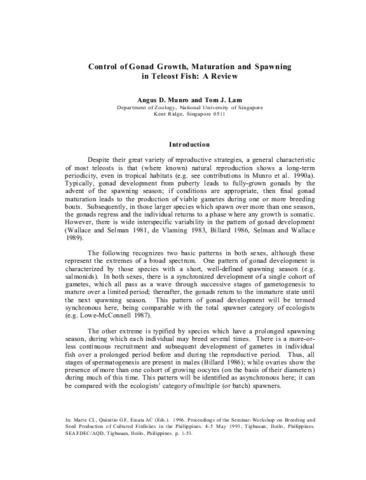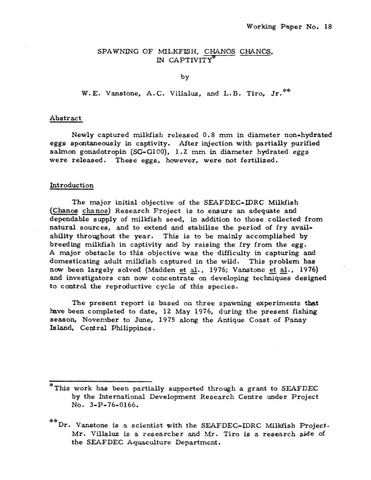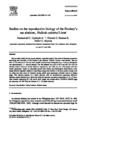LHRHa and pimozide-induced spawning of Asian catfish Clarias macrocephalus (Gunther) at different times during an annual reproductive cycle
| dc.contributor.author | Tan-Fermin, Josefa D. | |
| dc.contributor.author | Pagador, Rosenio R. | |
| dc.contributor.author | Chavez, Rosemarie C. | |
| dc.date.accessioned | 2013-04-24T03:44:43Z | |
| dc.date.available | 2013-04-24T03:44:43Z | |
| dc.date.issued | 1997 | |
| dc.identifier.citation | Tan-Fermin, J. D., Pagador, R. R., & Chavez, R. C. (1997). LHRHa and pimozide-induced spawning of Asian catfish Clarias macrocephalus (Gunther) at different times during an annual reproductive cycle. Aquaculture, 148(4), 323–331. | en |
| dc.identifier.issn | 0044-8486 | |
| dc.identifier.uri | http://hdl.handle.net/10862/1606 | |
| dc.description.abstract | Captive Clarias macrocephalus were induced to spawn during the off-season (February), before (May), during (August) and end (November) of the natural breeding period to test their seasonal responsiveness to hormone treatment, and assess the resulting egg and larval quality. Intramuscular injections were given to five fish in each treatment consisting of 0.05 μg LHRHa + 1 μg PIM g−1 body weight (BW), 0.05 μg LHRHa, 1 μg PIM, or LHRHa vehicle (0.9% NaCl) and PIM vehicle (1 dimethylsulfoxide: 9 propylene glycol, v/v). At any phase of the annual cycle, only fish injected with a combination of LHRHa and PIM spawned, although initial egg size was similar among fish within a season. However, initial egg size was largest in fish induced to spawn in May (1.59 mm), followed by fish induced in August and November (1.54 mm), and smallest in fish induced in February (1.49 mm). All fish ovulated when induced to spawn in May and August, but ovulation rates decreased to 80% and 60% when fish were injected in November and February, respectively. Catfish induced to spawn in May, August and November had higher egg production, fertilization and larval survival rates than the fish induced in February. Hatching rates were higher in fish induced in May and August than in February, while hatching rate of fish induced in November was similar to those spawned at other times of the year. These results provide useful information regarding the broodstock management and hatchery production of C. macrocephalus. | en |
| dc.language.iso | en | en |
| dc.publisher | Elsevier | en |
| dc.subject | freshwater catfish | en |
| dc.subject | Clarias macrocephalus | en |
| dc.title | LHRHa and pimozide-induced spawning of Asian catfish Clarias macrocephalus (Gunther) at different times during an annual reproductive cycle | en |
| dc.type | Article | en |
| dc.identifier.doi | 10.1016/S0044-8486(96)01423-8 | |
| dc.citation.volume | 148 | |
| dc.citation.issue | 4 | |
| dc.citation.spage | 323 | |
| dc.citation.epage | 331 | |
| dc.citation.journalTitle | Aquaculture | en |
| seafdecaqd.library.callnumber | VF SJ 0554 | |
| seafdecaqd.databank.controlnumber | 1997-08 | |
| dc.subject.asfa | fish culture | en |
| dc.subject.asfa | reproduction | en |
| dc.subject.asfa | reproductive cycle | en |
| dc.subject.asfa | sex hormones | en |
| dc.subject.asfa | spawning | en |
| dc.subject.asfa | annual | en |
Files in this item
| Files | Size | Format | View |
|---|---|---|---|
|
There are no files associated with this item. |
|||
This item appears in the following Collection(s)
-
Journal Articles [1256]
These papers were contributed by Department staff to various national and international journals.



